Instinctive Archery – History, Methods & Analysis
What is Instinctive Archery?
Instinctive archery is a method of shooting a bow, potentially with great accuracy, without aiming. Without aiming you say? Yes. This method does not utilize any equipment, other than the archer’s eyes, body, and the bow and arrow itself. No scopes. No peep sights. Not even the tip of the arrow is used to visually line up a target. No nothing. Just the archer, a bow, and an arrow.
But how can you accurately hit the target if you do not aim? It is interesting to me how it is so hard for some to believe that such a method of shooting could work. Let us put things into perspective with this brief article on our favorite shooting and/or “aiming” method.

Instinctive Archery is Not Unique
Let us take a few examples into account to illustrate just how prevalent the instinctive method is.
How does an American football quarterback manage to throw that pigskin 60 yards at a moving target, when he himself is moving and manages to make the pass with great accuracy?
A hockey player slaps a puck into the very top corner of the net exactly where they intend it to go. But how?
How does a carpenter or roofer hit a nail directly on the head with their hammer without the use of a scope or sights or laser beams?
A professional basketball player stands well outside the three-point boundary and shoots the basketball with perfect trajectory directly into the net. Swish.
You get the point! The answer to all of the above questions is that they are using hand-eye coordination and instinctively connect the projectile or handheld tool with the intended target.
In fact, instinctive shooting of one form or another is practiced all the time in sports and everyday life. You yourself are likely more familiar with instinctive shooting than you may realize. Like when you crumpled up that piece of paper and threw it in the garbage from 10 feet away. Congratulations! You just did the instinctive shooting. You didn’t attach a scope to your wrist and a laser sight onto the crumpled-up piece of paper, did you? Of course not. You knew what you were doing instinctively.
However, let’s not get caught up with semantics. Instinctive does NOT mean that it is inherent within an individual. Nobody is preprogrammed with any particular skill. It must be cultivated. Shooting instinctively and accurately takes considerable practice.
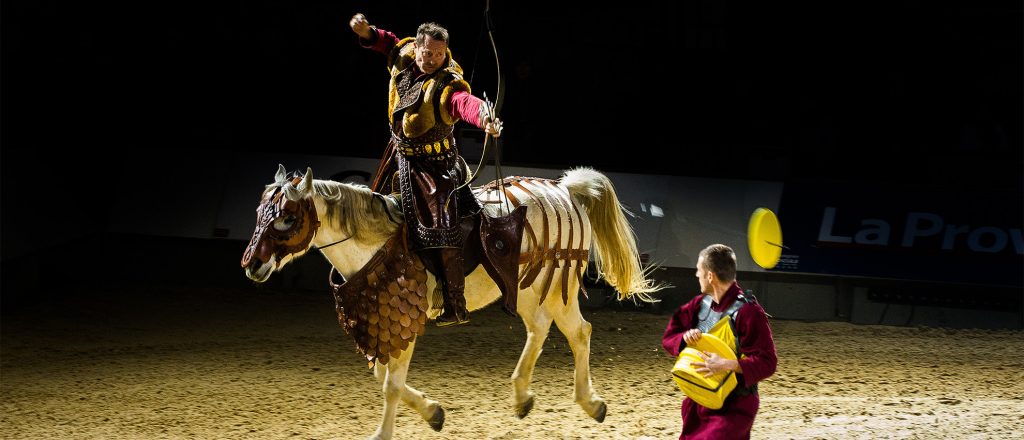
Instinctive Archery VS Gap Shooting
First of all, what is gap shooting, and is it a form of so-called “instinctive archery”? This may be an area of hot debate for some. We will give you our humble opinion in a moment, but first, let us define gap shooting.
Gap shooting refers to an aiming method, where the arrow, or more specifically the arrowhead, is used as a reference for assistance in lining up the target and for distance to the target. The archer visually and physically lines up the arrow with the target by looking down along the arrow shaft toward the intended target.
That is all fine and dandy but is it a form of instinctive archery? I would have to respectfully submit that it is not. Here is why. Using an arrow or arrowhead as a sight reference is still using a sight. You are consciously lining up a visual marker on your bow set up with the intended target.
Instinctive archery relies solely on subconscious muscle memory and the target itself as the only visual cue. While it may be true that the subconscious can and does register the bow and arrow in the peripheral vision of the archer, the archer does not consciously line up any visual references.
Consciously aligning visual references by definition is not instinctive archery. It does not matter if those visual references that are on the bow are scopes and laser beams powered by particle accelerators or just the bow grip and the arrowhead itself.
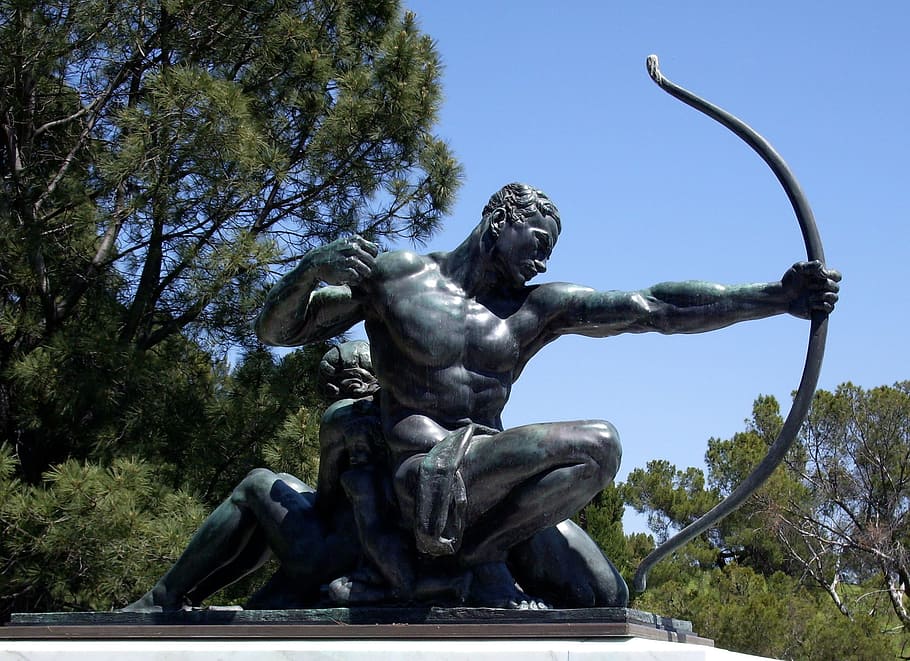
Instinctive Aiming Method
You know the old saying: “a picture is worth a thousand words”. Well, what about a video? That would be worth even more don’t you think? But of course, you do. I could talk to you in great length about the instinctive archery aiming method or I could show what instinctive archery looks like.
The following video is one of Lajos Kassai, the famed Hungarian mounted archer. Some may or may not be a huge fan of his style or methods. However, one thing about Kassai is undeniable. He is a master of instinctive archery.
As you may have noticed, Kassai does not appear to be using any visual reference other than the target itself. He is locked on and focused on the target throughout the entire run.
Kassai elaborates on drawing the bow with the instinctive aiming method in his autobiographical work “Horseback Archery”.
“I could not say how many people I have taught to shoot a bow, but there are two basic types: the king and the servant. The king is there in all the historic depictions of mounted archers, whether Sassanid, Hun, Hungarian or Mongolian, that is to say in all records of the peoples of the bow. He is characterized by man being at the center and drawing the bow towards him: there is a perfect balance of force, drawing in a straight line and toward an internal fixed point.”
Indeed, in studying ancient drawing and artifacts, it can be noted that the archers are indeed looking straight ahead (presumably at the target) while they draw their bows toward themselves. This can be clearly noted on Sassanid Persian plates such as the exquisite examples below.

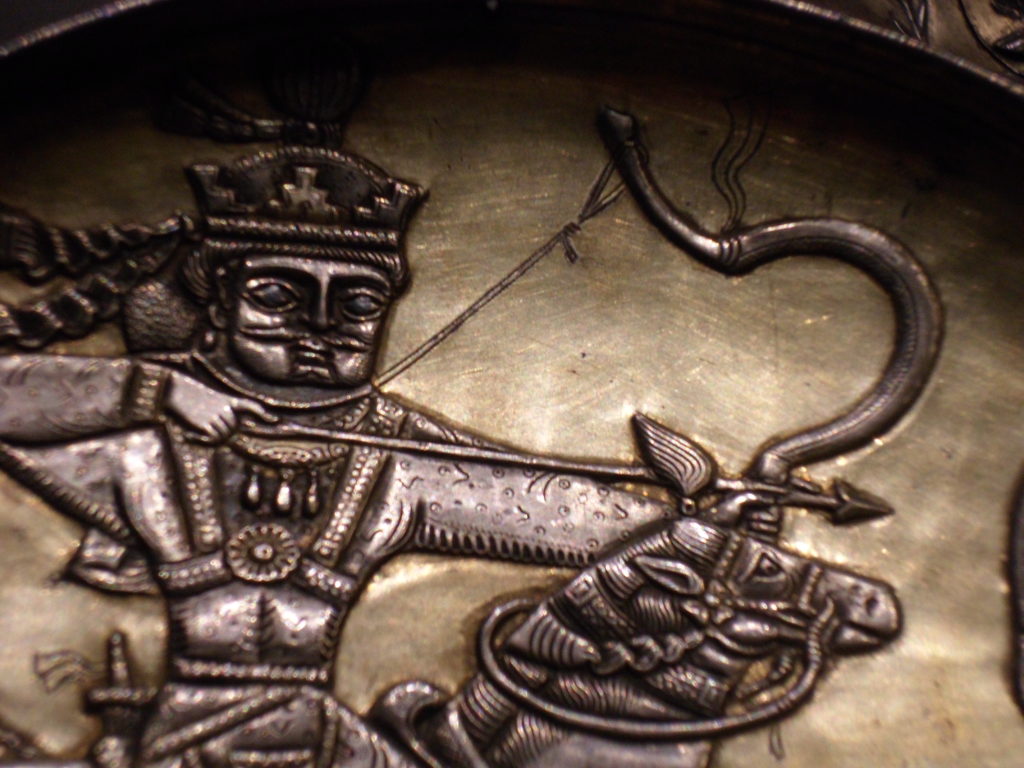
Clarity In Your Mind’s Eye
The mental aspect of the instinctive aiming method as alluded to earlier involves much practice and training in order to incorporate the movements into the subconscious (muscle memory). This must be done while maintaining an intense focus on the target. Kassai continues:
“The archer must learn to direct his attention at the target. In those moments, his awareness is like a smooth body of water. Imagine a crystal clear mountain lake, surrounded by a pine forest, with no wind at all. The surface of the water reflects its surroundings so perfectly that it is indistinguishable from the original. That’s how sharp the target has to appear in the archer’s awareness. Now let’s look at our mountain lake when a gentle breeze flutters along the surface. The perfect mirror shatters into tiny pieces. That’s how our awareness becomes a raging sea in the tempest of our thoughts.”
Benefits of Instinctive Archery
Several benefits of shooting instinctively avail themselves to the patient archer who is well-practiced in the skill. Some of the more obvious benefits can include the following.
- Increased rate of fire. While this may not be as important in modern times, it was of vital importance in ancient and medieval warfare
- Increased coordination
- Increased ability to subconsciously gauge distance, trajectory, etc.
- Ideal for mounted archery. This form of archery makes it nearly impossible to use sights and/or other aiming assistance. Gap shooting becomes extremely difficult from the back of a galloping horse!
- Instinctive shooting is very much a mental even spiritual exercise. It can be extremely satisfying and fun like all forms of archery.
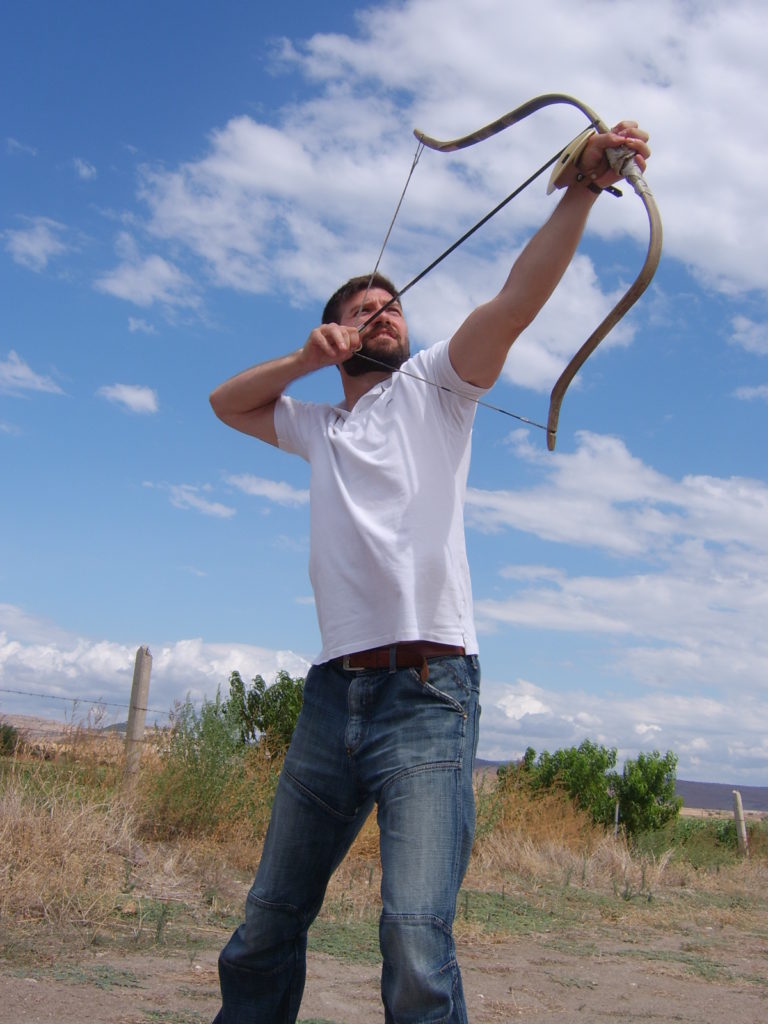
Instinctive Archery Practice
Being able to shoot instinctively with precision, consistency and accuracy takes time and practice! Competent archers of the past who were renowned for their rapid, instinctive archery, such as the Huns, Magyar, Mongols, and Turks began practicing in early childhood.
How can we practice this ancient and rewarding form of archery? There are several training exercises and drills that can be implemented by the archer who is interested in learning or improving their instinctive archery technique.
One of the most fundamental aspects of instinctive archery involves nocking the arrow. Doing this without actually looking at the bow or the arrow makes the operation harder than it would be otherwise. One could begin training to shoot instinctively by practicing the nock repetitiously. Just like typing on a keyboard without looking at it, the benefits are immense once the fundamentals are acquired.
Muscle Memory and Proper Technique
Before shooting an actual bow takes place, the beginner instinctive archer must first have sufficient strength as well as proper technique. This is done not with actual shooting bows but training devices or training bows. Let us examine two schools of traditional instinctive archery and their instinctive archery practices.
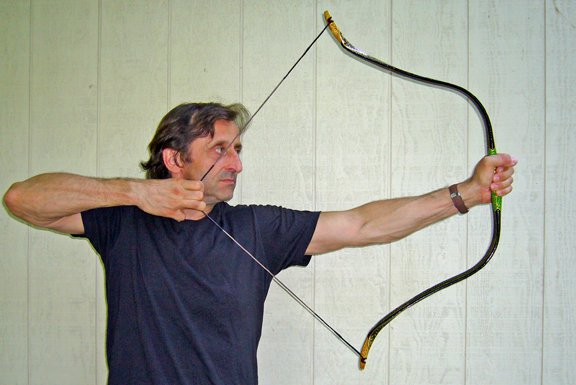
Turkish Instinctive Archery Training
The first is the traditional Turkish or Ottoman style which was practiced for centuries and produced archers renowned for their ability to shoot over long distances and with great accuracy on horseback.
Before the archer nocks an arrow and begins firing, they practice with a special training bow known as a kepaze bow. These bows were made to light draw weights, and were likely simple self bows (made from a single stave of wood) as opposed to composite bows made from wood, horn, and sinew.
The bow was simply drawn repeatedly in the Mediterranean style (3 fingers) and let down again. This should be done until the archer can pull the bow to full draw and let it down again a total of 500 times. Yes, archery takes training and practice.
During these repetitions, a master archer will work with the archer in training to correct any flaws in their posture and technique. This phase of the training typically takes a month or more. By the time the archer finishes this early phase, they gain strength, muscle memory through rigorous repetition, and are aware of proper ergonomics, posture, and technique.
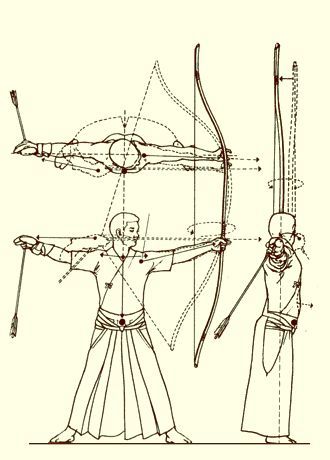
The Thumb Release
Next, after introducing the archer to a stronger bow, the thumb release technique had to be used. An arrow fixed and bound to the string helps the archer simulate a proper draw with an arrow nocked. Roughly 500 repetitions without tiring were required to move onto the next phase.
The next phase is where a proper functioning bow and arrows are brought into play. A target is placed at a 45-degree elevation to the archer, at a distance of a couple of feet. The archer repeatedly nocks, draws, and fires, while the angle that the arrow strikes the target is analyzed in order to formulate further adjustments to the proper technique.
The Kassai School (Magyar & Hunnic Archery)
Kassai, a master instinctive archer, describes the early training methods he prescribes in his work “Horseback Archery” (PUSKI KIADO kft), pages 53, 54.
“We should not use a bow for our first exercises. Let’s stand in front of a mirror and put our arms up straight to the sides, so they are precisely at shoulder height. We should practice this until we can do it perfectly without a mirror. Our next step (for right-handed people who hold the bow in their left) is bending the right forearm to the position it would be in if we were holding a bow drawn to the breastbone, then straightening it again, as if it pivoted around the elbow. Again, practice those moves until they become instinctive. Let’s use the mirror, but let’s not grow dependent on it. We should not look into the mirror but let’s not grow dependent on it. We should not look into the mirror but into ourselves.
Then let’s acquire a bucket, replace the handle with a piece of string, and put sand in it (an increasing amount as we grow stronger), and let’s hold it by the last joints of the three fingers we would use to draw a bow. Let’s stand up straight and let the arm hang by our side, relaxing all muscles in the wrist, elbow, and shoulder: the only place there can be tension is in the three fingers holding the weight. Let’s conjure a winter landscape, with now collecting on the branch of a pine tree until it suddenly bends under the burden and the now slips off it: we should drop the bucket at that moment. Once we can do those exercises perfectly, it’s time to take up the bow.”
Kassai’s Book on Amazon (Click Image for Link)
Instinctive Archery in Action
If you came this far, you get a reward. Let’s take a closer look at instinctive archery in action! The first video shows traditional Japanese archery or kyudo. The second is once again Kassai, and the third is Murat Özveri, DDS, Ph.D. whose area of expertise is Turkish archery. Enjoy.
Thank You!
